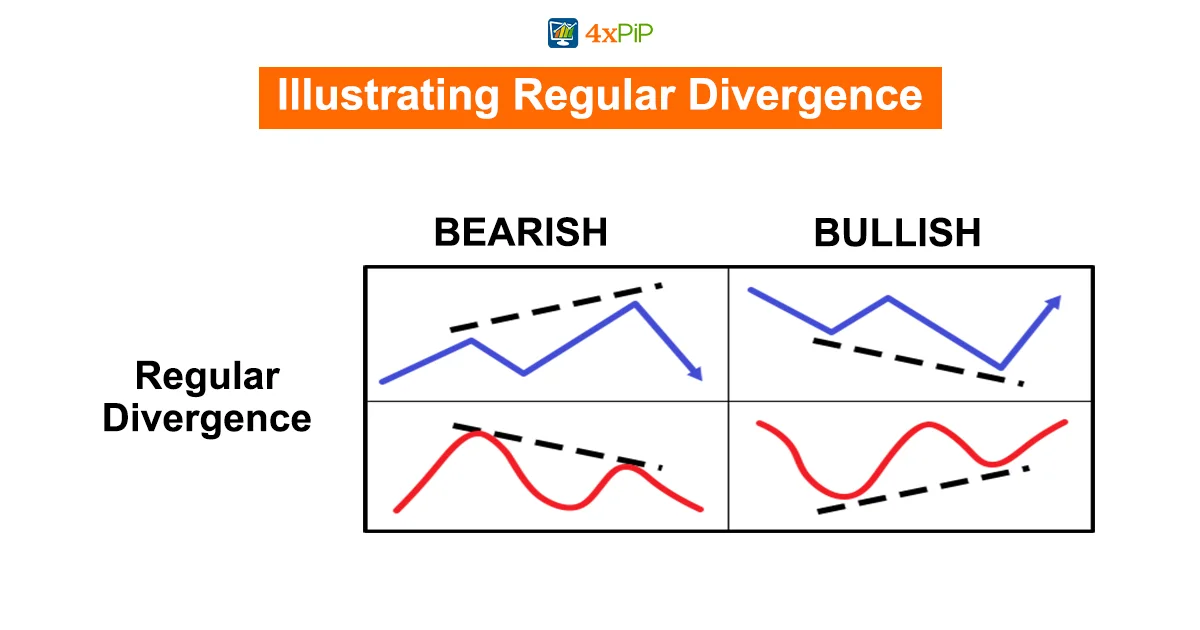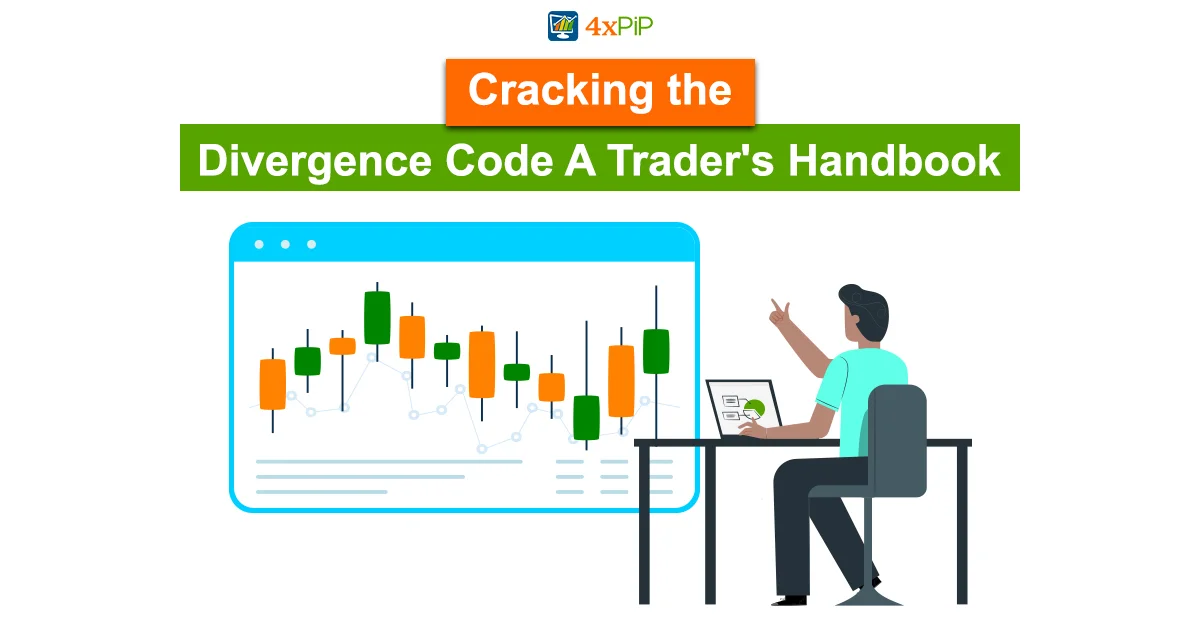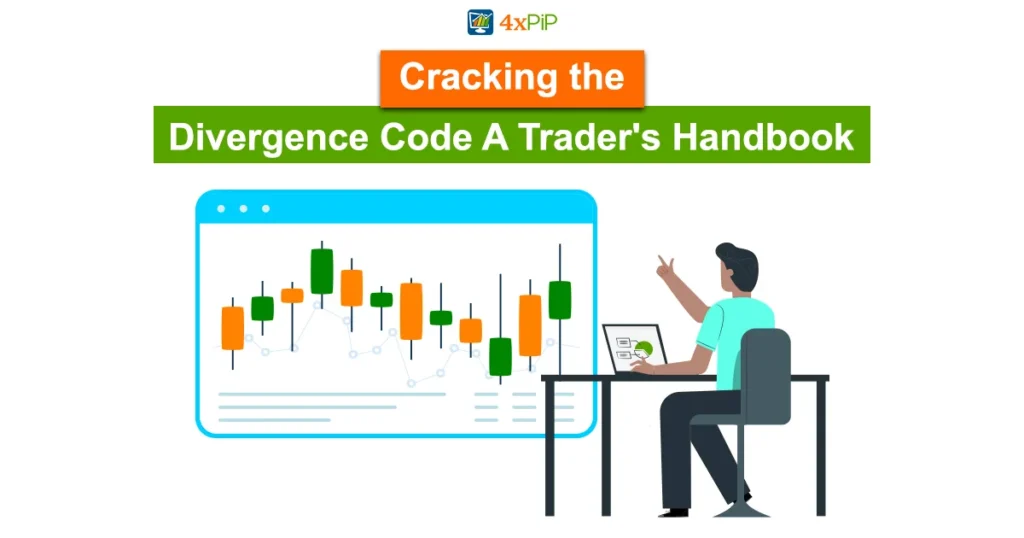In the complex world of trading, understanding the differences between hidden divergence and regular divergence can significantly impact your success. At 4xPip, we recognize the importance of these concepts in crafting effective trading strategies. This article delves into the nuances of hidden and regular divergence for those eager to enhance their trading skills. For personalized guidance, reach out to our experts at [email protected].
Hidden Divergence vs Regular Divergence: Decoding the Variations:
Hidden divergence and regular divergence play distinct roles in trading. Regular divergence signals a potential trend reversal, while hidden divergence suggests a continuation of the existing trend. The distinction lies in where these divergences are measured: regular divergence uses lows during a downtrend and highs during an uptrend, whereas hidden divergence operates in the opposite direction.

Illustrating Regular Divergence:

Regular divergence comes in various forms, often observable through indicators like MACD. In a downtrend, when price records lower lows accompanied by a double bottom in MACD, it signals a potential reversal. Alternatively, in an uptrend, double tops in price matched with lower highs in the histogram present another indication of a possible shift.
Spotting Hidden Divergence:
Identifying hidden divergence demands a keen eye, especially when analyzing the MACD histogram. During an uptrend, higher lows in price coupled with lower lows in the histogram are instances of bullish hidden divergence. Recognition becomes crucial, and at 4xPip, we emphasize the importance of honing this skill for successful trading.
Navigating Confusion:
The center line on the histogram often introduces confusion. While regular divergence signals are usually clear, crossing the center line can muddy the waters. At 4xPip, we recommend focusing on divergence signals above or below the center line, simplifying the process and aiding accurate interpretation.
Tips for Trading Hidden Divergence: A Winning Combination:
Strategic Combinations:
Maximize your success with divergence trading by integrating various patterns with entry triggers. Candlestick patterns, when combined with hidden divergence, enhance precision. In the example provided, a bullish engulfing pattern and a morning star pattern complement two hidden divergence patterns, offering optimal entry points.
Stochastic Oscillator Example:
Explore the synergy between hidden divergence and other indicators, such as the stochastic oscillator. A bearish hidden stochastic divergence, where price forms a lower high while the stochastic oscillator achieves a higher high, sets the stage. A subsequent bearish engulfing candlestick pattern strengthens the case, providing a robust entry signal.
RSI: Unveiling Hidden Divergence:
Delve into the realm of hidden divergence with RSI. A bearish hidden RSI divergence is showcased, where price establishes a lower high while the RSI reaches a higher high. The confirmation comes with a bearish engulfing pattern, highlighting the interconnected nature of candlestick signals and hidden divergence.
Final Thoughts: Leveraging Divergence for Profitable Trades:
Understanding the intricacies of hidden and regular divergence is essential for traders seeking optimal entry and exit points. Hidden divergence, drawn from the highs and lows in a trend, signals continuity, while regular divergence signals a potential reversal. At 4xPip, we emphasize the potency of combining these signals with other strategies for robust and profitable trading. Share your preferences between hidden and regular divergence in the comments below. In our experience, both have their merits, forming a dynamic duo in the trader’s toolkit. Don’t miss the chance to explore these powerful tools for enhancing your trading journey.
Conclusion:
In the dynamic world of trading, mastering the concepts of hidden and regular divergence is pivotal for success. At 4xPip, we’ve explored the distinctions and applications of these techniques, shedding light on their roles in trend continuation and reversal. By combining these divergence signals with other strategies, traders can elevate their precision and increase the likelihood of profitable trades. Whether you prefer hidden or regular divergence, incorporating both into your trading toolkit can provide a well-rounded approach. For personalized guidance and a deeper understanding of these concepts, reach out to our experts at [email protected]. Seize the opportunity to enhance your trading skills and navigate the markets with confidence.





